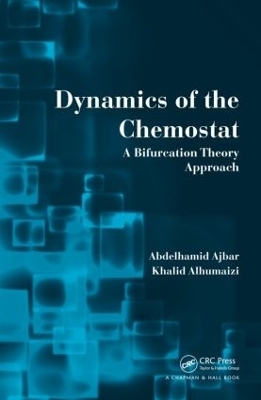
Dynamics of the Chemostat
Chapman & Hall/CRC (Verlag)
978-1-4398-6714-3 (ISBN)
IntroductionThe authors first survey the major work that has been carried out on the stability of continuous bioreactors. They next present the modeling approaches used for bioreactive systems, the different kinetic expressions for growth rates, and tools, such as multiplicity, bifurcation, and singularity theory, for analyzing nonlinear systems.
ApplicationThe text moves on to the static and dynamic behavior of the basic unstructured model of the chemostat for constant and variable yield coefficients as well as in the presence of wall attachment. It then covers the dynamics of interacting species, including pure and simple microbial competition, biodegradation of mixed substrates, dynamics of plasmid-bearing and plasmid-free recombinant cultures, and dynamics of predator–prey interactions. The authors also examine dynamics of the chemostat with product formation for various growth models, provide examples of bifurcation theory for studying the operability and dynamics of continuous bioreactor models, and apply elementary concepts of bifurcation theory to analyze the dynamics of a periodically forced bioreactor.
Using singularity theory and bifurcation techniques, this book presents a cohesive mathematical framework for analyzing and modeling the macro- and microscopic interactions occurring in chemostats. The text includes models that describe the intracellular and operating elements of the bioreactive system. It also explains the mathematical theory behind the models.
Abdelhamid Ajbar is a professor in the Department of Chemical Engineering at King Saud University. He earned a Ph.D. in chemical engineering from the University of Notre Dame. His research interests encompass the analysis, design, and control of chemical and biochemical systems as well as the applications of chaos theory to study hydrodynamics of multiphase reactors. Khalid Alhumaizi is a professor in the Department of Chemical Engineering at King Saud University. He earned a Ph.D. in chemical engineering from the University of Minnesota. He also co-authored (with the late R. Aris) the book Surveying a Dynamical System: A Study of the Gray-Scott Reaction in a Two-Phase Reactor. His research interests include process modeling and simulation and nonlinear dynamics.
Introduction to Stability of Continuous Bioreactors. Introduction to Bioreactors Models. Introduction to Stability and Bifurcation Theory. The Basic Model of Ideal Chemostat. The Chemostat with Wall Attachment. Pure and Simple Microbial Competition. Stability of Continuous Recombinant DNA Cultures. Biodegradation of Mixed Substrates. Predator-Prey Interactions. Ratio-Dependent Models. Unstructured Models with Product Formation. Models with Product Formation: Type II Models. Models with Product Formation: Type III Models. Operability of Nonideal Bioreactors. Operability of Prefermentation of Cheese Culture. Biodegradation of Wastewater in Aerated Bioreactors. Complex Dynamics in Activated Sludge Reactors. Complex Dynamics in Forced Bioreactors. Appendix. Bibliography. Index.
| Erscheint lt. Verlag | 20.9.2011 |
|---|---|
| Zusatzinfo | 13 Tables, black and white; 145 Illustrations, black and white |
| Sprache | englisch |
| Maße | 156 x 234 mm |
| Gewicht | 657 g |
| Themenwelt | Mathematik / Informatik ► Mathematik ► Algebra |
| Mathematik / Informatik ► Mathematik ► Analysis | |
| Mathematik / Informatik ► Mathematik ► Angewandte Mathematik | |
| Naturwissenschaften ► Biologie ► Mikrobiologie / Immunologie | |
| Naturwissenschaften ► Chemie ► Technische Chemie | |
| Technik ► Umwelttechnik / Biotechnologie | |
| ISBN-10 | 1-4398-6714-3 / 1439867143 |
| ISBN-13 | 978-1-4398-6714-3 / 9781439867143 |
| Zustand | Neuware |
| Haben Sie eine Frage zum Produkt? |
aus dem Bereich


